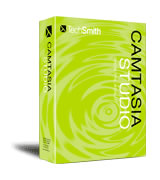Annalee “Techsploitation” Newitz, whom I met at the first CodeCon back in 2002, has written an article for Wired News about her successful attempt to buy Digg votes:
I spent several days creating a blog intended to be as random and boring as possible. Built from templates, My Pictures of Crowds exhibits all the worst aspects of blogging. There’s an obsessive theme — photographs of crowds — but no originality and absolutely no analysis. Each entry is simply an illogical, badly punctuated appreciation of a CC-licensed picture taken from Flickr. Also, there are a lot of unnecessary exclamation points!Once I had created a blog destined to be least popular in the ‘sphere, I opened a Digg account under a pseudonym. Then, at 8 Monday morning, I posted a story linking to the blog. My brilliant headline was, “Why Are People Fascinated By Photographs of Crowds?”
Four and a half hours later, I was the only person who had dugg my story. That’s when I hired a Digg-gaming service called User/Submitter, or U/S. This enterprise, run by one or more zealously anonymous individuals, advertises that it can help “submitters” get Digg stories noticed by paying “users” to digg them. There’s a $20 sign-up fee and each digg costs $1, which gets split evenly between the service and the digger. U/S refunds money paid for any diggs the submitter doesn’t get in a 48-hour period. I put down $450 for 430 diggs, but wound up getting refunded all but roughly $100 of that. (Wired News is owned by CondéNet, which also owns Digg competitor reddit.)
User/Submitter has a pretty customer-friendly service. Shortly after paying them, Analee received an email telling her that her story was likely to get “buried”; they offered her a refund. She decided to go on, and amassed 40 diggs in about 10 hours. That was the tipping point: soon came the “organic” diggs and comments. “Overnight, I’d been hammered with so many hits that the diggers had to set up a mirror,” she wrote. It seems that to get a popular article, you have to have a popular article.
Links
- I Bought Votes on Digg (Wired News)
- User/Submitter


 Outlook, on the other hand, was a totally different issue.
Outlook, on the other hand, was a totally different issue.

